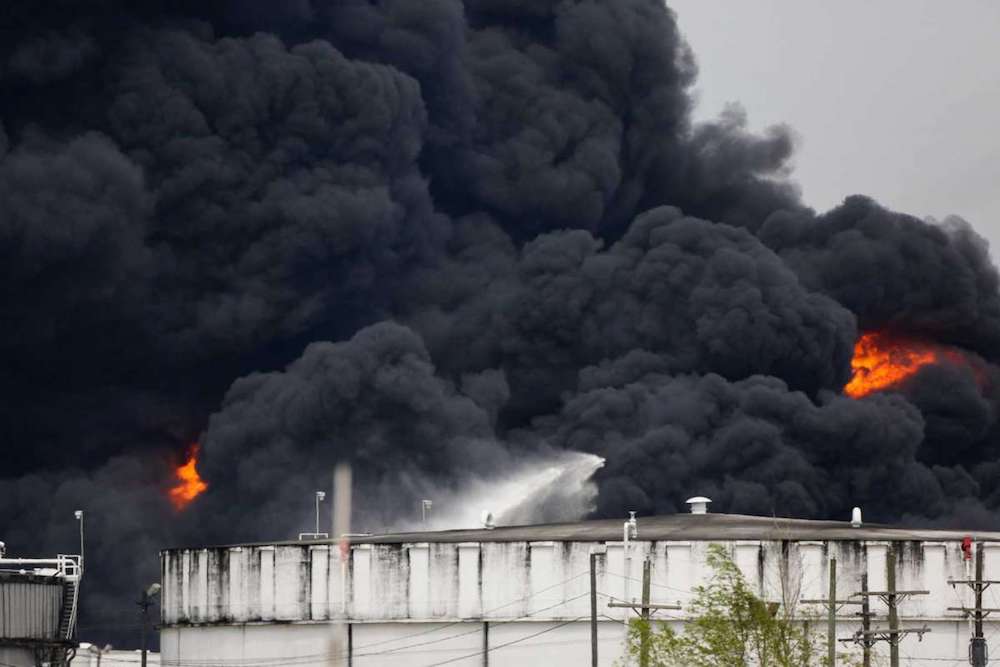
Godofredo A. Vasquez, Houston Chronicle
In the last few days, you probably caught drift of the news if you didn't witness the large plume of black some hovering over southeast Texas from the massive chemical plant fire in Deer Park. The fire was finally extinguished and air quality is being monitored extensively, but this smoke can seriously create problems for anyone with lung or heart conditions. Although the air quality may not be bad while the smoke plume is up – what goes up must come down … and when it comes down, it can potentially be harmful.
According to reliable sources, most of the chemicals involved were used in the production of gasoline. The tanks that were on fire contained toleune, naphtha, xylene and pyrolysis gasoline. Just recently, a shelter-in-place was issued in Deer Park due to elevated levels of benzene. This highly-flammable chemical is widely used in the production of plastics, resins, and nylon and synthetic fibers. Benzene is also a natural part of crude oil, gasoline and cigarette smoke.
Short-term exposure to any of these fumes can cause dizziness, fatigue or headaches. For those susceptible, the smoke can trigger asthma attacks and heart attacks. Many of the chemicals lingering in the air are likely to be carcinogenic, or cancer-causing.
So, what can you do to protect yourself – especially if you or your child fear your health is at risk?
- If you can, stay indoors. Keep the windows closed and avoid strenuous outdoor activities.
- If you have to drive somewhere, keep the windows rolled up and set the air in the car to recirculate.
- Using a high-efficiency particulate (HEPA) filter might be helpful.
Lastly, the most important part of managing any crisis is working to prevent a similar incident from ever occurring again. Effective prevention measures for these types of petrochemical issues would help to avoid causing undue harm to our local communities in the future.